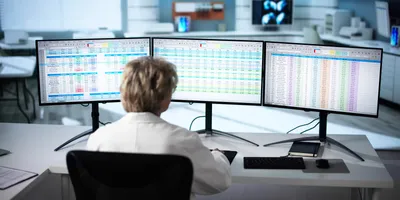Acquiring the right laboratory instruments has always been crucial for scientific research. Traditionally, lab managers faced a dilemma: purchase new from original equipment manufacturers (OEMs) at a high cost, or risk quality with used instruments from unreliable sources. That landscape has changed significantly with the evolution of digital marketplaces, which now offer greater pricing transparency, broader equipment access, and new strategies for lab asset management by selling surplus equipment.
One example is LabX, a dedicated online marketplace for buying and selling new, used, and refurbished lab equipment. LabX is a sister company to Lab Manager and has played a key role in shaping how laboratories source equipment online. What began as a basic listings platform has grown into a robust tool that helps labs control costs, compare products, and extend the lifecycle of valuable assets.
“Before the internet age, and before LabX, buying used instruments was very difficult. It was more of a buyer-beware situation and used instruments were mostly purchased in their current state without refurbishment,” says Scott Hanton, editorial director at Lab Manager. “The first used instruments I can remember encountering were government surplus, and they really didn’t have what we were looking for. LabX helped formalize the used instrument market, allowing users to search for the specific types of equipment they were looking for. The LabX marketplace helped make used equipment competitive.”
Digital lab marketplaces enhance lab equipment procurement and decision-making
Online marketplaces offer lab managers far more than just secondhand gear. Many platforms—including LabX—provide searchable listings, equipment photos, pricing filters, and specifications that help buyers make informed decisions without waiting for vendor quotes or conference visits.
“As a lab scientist, I know what capability I’m looking for,” says Hanton. “Searching the marketplace allows me to explore a range of vendors, models, price ranges, and accessories. The pictures also really help. We could tell a lot about a potential used instrument just by inspecting the image on the site.”
Refurbished equipment, in particular, is gaining traction with lab professionals looking to balance performance with budget constraints. “There is a tremendous difference between used equipment and used equipment that’s been refurbished,” Hanton explains. “Now we could get some warranty with the instrument and move away from a buyer-beware mentality.”
LabX also details other advantages of online marketplaces, such as:
- Better price transparency and increased competition among sellers.
- Offering a reuse pathway for functioning but outdated instruments.
- An informal way for sellers to track trends in equipment demand.
Lab equipment procurement takeaways for lab managers
- Compare equipment pricing in real time to improve budgeting and reduce procurement delays.
- Explore refurbished options for warranty-backed alternatives that support cost savings and sustainability.
- Sell surplus instruments to recapture value and manage space more efficiently.
- Track equipment trends to stay ahead of emerging technologies and pricing shifts.
As digital lab marketplaces evolve, they are no longer just places to buy used gear—they are decision-making tools. For lab managers, understanding how to use them strategically is key to maintaining both operational and financial agility.












